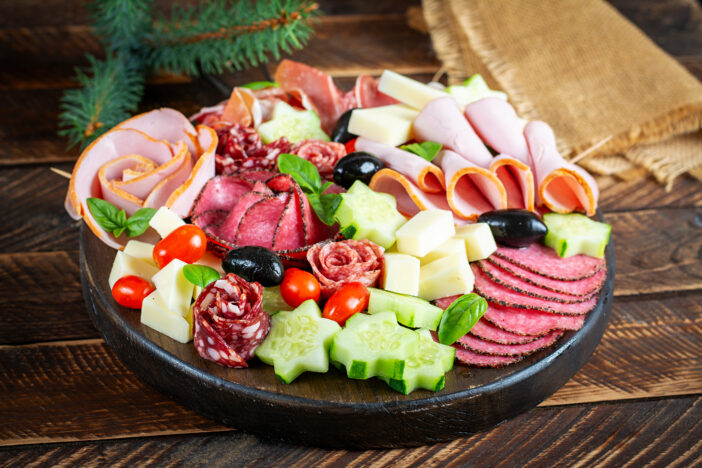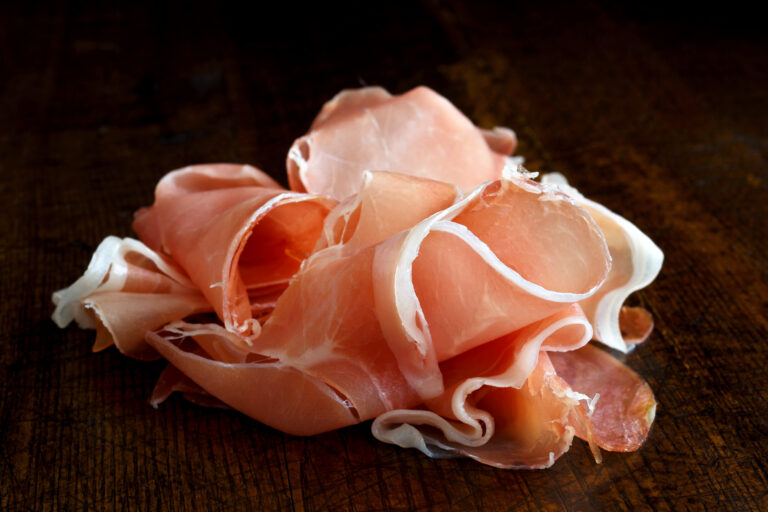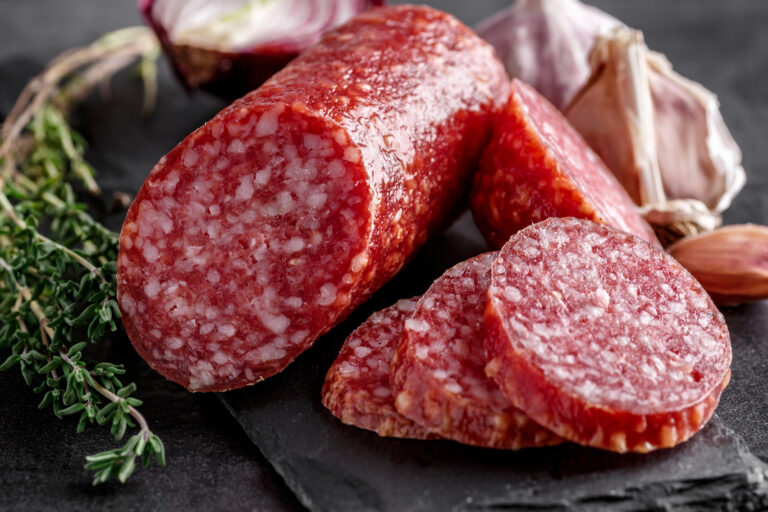10 Italian Charcuterie Board Tips to Impress Your Guests
Craft an impressive Italian charcuterie board with cured meats, cheeses, bread, accompaniments, fruits, and nuts for a flavorful, authentic experience.

Creating the perfect Italian charcuterie board can elevate any gathering. Discover essential tips to impress your guests with authentic flavors and stunning presentations.
Disclosure: As an Amazon Associate, this site earns from qualifying purchases. Thank you!
Understanding the Basics of Italian Charcuterie

Crafting an Italian charcuterie board is an art form celebrating diverse flavors and textures. Here’s what you need to know.
What Is Italian Charcuterie?
Italian charcuterie, known as “salumi,” consists of cured meats, cheeses, and accompaniments. It’s all about savoring high-quality, traditionally prepared meats.
- Cured Meats: Feature popular choices like prosciutto, salami, and coppa. These meats offer a range of flavors from salty to savory.
- Cheeses: Include classics such as Parmigiano-Reggiano, mozzarella, and gorgonzola. Each cheese provides a unique texture and taste.
- Bread and Crackers: Offer artisanal bread and crisp crackers. They provide a base to enjoy the meats and cheeses.
- Accompaniments: Add olives, sun-dried tomatoes, and artichokes. These bring additional flavors and a touch of Italian authenticity.
- Fruits and Nuts: Incorporate fresh fruits like figs and grapes, alongside nuts such as almonds. They balance the rich, savory meats and cheeses.
With these essentials, you’ll create an unforgettable Italian charcuterie board that delights every palate.
Selecting the Right Ingredients

Choosing the Best Meats
Go for a mix of textures and flavors. Prosciutto brings a delicate saltiness, while salami offers a punchy, spiced bite. Include coppa for a rich, marbled meat option. Use high-quality, artisanal products for the best experience.
Incorporating Italian Cheeses
Include at least three varieties. Parmigiano-Reggiano for a nutty, firm texture, mozzarella for its creamy smoothness, and gorgonzola for a bold, tangy flavor. Use authentic Italian cheeses to ensure genuine taste.
Adding Authentic Italian Accents
Incorporate extras like olives, sun-dried tomatoes, and artichokes for added depth. Fresh fruit like figs and grapes, along with almonds, will complement the meats and cheeses. Use these accents sparingly but thoughtfully for balance.
Designing Your Board
An Italian charcuterie board should delight both visually and gustatorily. Master the art by following these key principles.
Arrangement Techniques
- Separate Components: Group meats, cheeses, and accompaniments in sections. This makes it easy for guests to navigate.
- Contrast Colors: Alternate dark and light items to create visual appeal. Think green olives next to salami slices.
- Vary Heights: Use small bowls, cheese wedges, and bunches of grapes to add dimension. Height makes the board more dynamic.
- Leave Spaces: Don’t overcrowd the board. Allow breathing room between sections for a cleaner look.
- Combine Salty and Sweet: Pair prosciutto with figs or coppa with grapes. It’s a classic Italian balance.
- Mix Soft and Crunchy: Offer soft cheeses like mozzarella alongside crunchy almonds or breadsticks. Diversity in textures enhances the tasting experience.
- Include Spicy and Mild: Use a mix of spicy salami and milder meats like mortadella. This caters to different taste preferences.
- Add Fresh and Cured: Fresh fruits and vegetables contrast nicely with cured meats and cheeses, adding a refreshing touch.
Serving Suggestions

Ideal Accompaniments
Use a mix of Italian breads like focaccia and ciabatta. Add breadsticks for crunch. Include a selection of olives, marinated artichokes, and sun-dried tomatoes. Fresh fruits like figs and grapes balance flavors. Scatter nuts like almonds and pistachios for texture.
Pairing with Italian Wines
Pair prosciutto with a light Prosecco. Serve salami with a robust Chianti. Match gorgonzola with a sweet Moscato. Complement Parmigiano-Reggiano with a full-bodied Barolo. These combinations elevate the charcuterie experience.
Preservation and Safety Tips

Storing Leftovers Properly
Store meats and cheeses separately. Use airtight containers for better preservation. Label and date each container to track freshness. Keep it in the coldest part of your fridge.
Handling Tips for Safety
Wash your hands before handling food. Use separate utensils for each type of ingredient. Slice meats and cheeses just before serving to maintain quality. Keep raw foods away from cured items to avoid cross-contamination.
Frequently Asked Questions
What are the key meats to include on an Italian charcuterie board?
The essential meats for an Italian charcuterie board include prosciutto, salami, and coppa. These cured meats provide a variety of flavors and textures that embody authentic Italian salumi.
Which cheeses pair best with Italian cured meats?
Ideal cheeses to pair with Italian cured meats are Parmigiano-Reggiano, mozzarella, and gorgonzola. These cheeses complement the flavors and enhance the overall experience of the board.
What accompaniments work well on an Italian charcuterie board?
Great accompaniments include olives, sun-dried tomatoes, artichokes, figs, grapes, and almonds. These elements add depth and balance to the board, enhancing both the appearance and taste.
How should I arrange the items on the charcuterie board?
To arrange the board effectively, start by placing larger items like cheeses and meats first, then fill in with smaller accompaniments. This creates a balanced and visually appealing presentation.
How do I store leftover meats and cheeses?
Store leftover meats and cheeses separately in airtight containers. Label and date them to keep track of freshness. Place them in the coldest part of the fridge to maintain their quality.
What are some safety tips for handling meats and cheeses?
Wash your hands before handling food and use separate utensils for each ingredient. Slice meats and cheeses just before serving to ensure freshness. To prevent cross-contamination, keep raw foods away from cured items.






